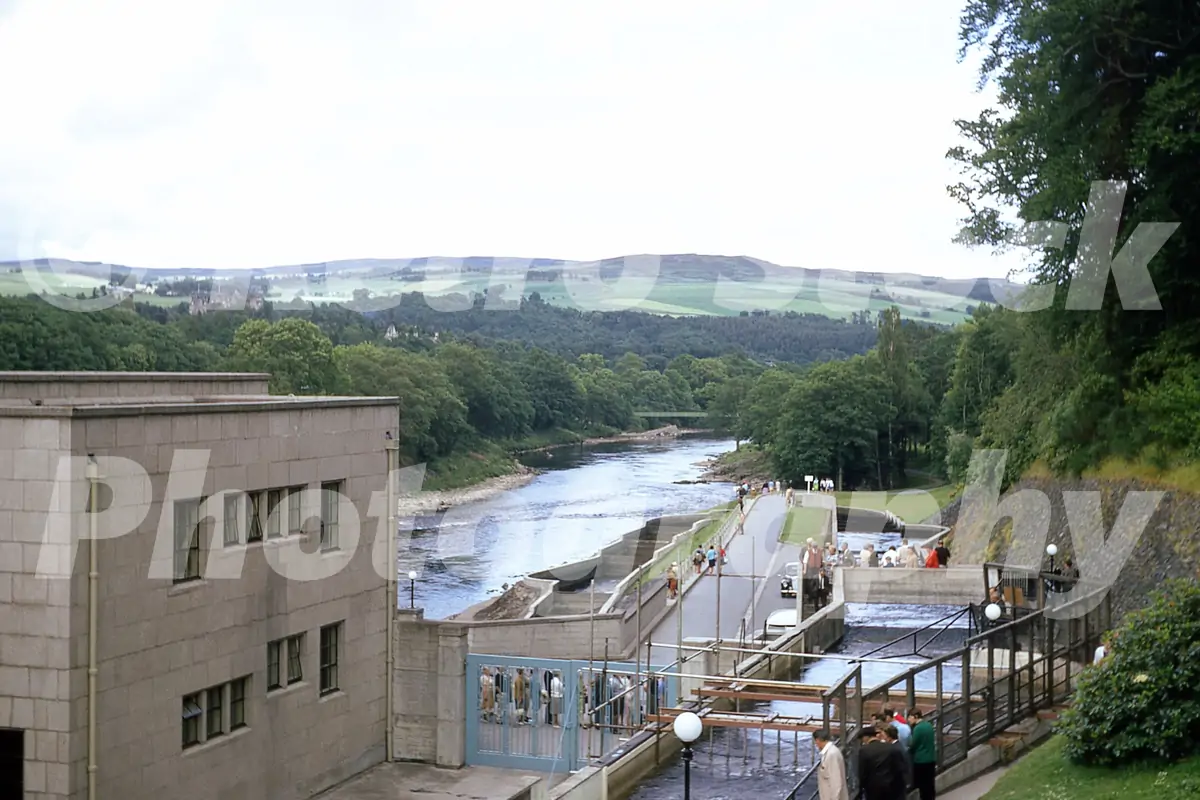The Pitlochry Dam, located on the River Tummel in the Perthshire town of Pitlochry, is one of Scotland’s most iconic hydroelectric developments. Built in the early 1950s as part of the North of Scotland Hydro-Electric Board’s ambitious programme, the dam is both a feat of engineering and a beloved local landmark. With its combination of industrial purpose, scenic setting, and wildlife-friendly design, Pitlochry Dam continues to draw visitors and generate clean energy more than seventy years after its completion.
A Vision of Post-War Progress
The dam was constructed between 1947 and 1951 as part of a major post-war drive to harness Scotland’s abundant water resources to provide electricity to rural communities. The North of Scotland Hydro-Electric Board, led by visionary engineer Tom Johnston, aimed to bring modern power to the Highlands while also respecting the natural landscape.
Pitlochry was one of several schemes developed along the Tummel and Garry catchment. Its location near the town centre made it more visible than most hydro schemes, and public opinion was initially cautious. However, the final design was sensitive to its environment and incorporated visitor access and educational features—setting the tone for hydro projects across Scotland.
Engineering the Dam
The Pitlochry Dam is a concrete gravity dam, spanning the River Tummel just upstream of the town. It holds back the waters of Loch Faskally, a man-made reservoir created by flooding part of the river valley. The dam channels water into the Pitlochry Power Station, a hydroelectric plant equipped with two Francis turbines that together generate around 15 megawatts of electricity—enough to power thousands of homes.
At the time of its construction, the scheme was considered an engineering marvel. It required the rerouting of roads, the relocation of the railway line, and the construction of a new bridge to carry traffic across the dam.
Scotland’s Most Famous Fish Ladder
One of Pitlochry Dam’s most distinctive features is its fish ladder, which allows migrating salmon to bypass the dam and reach their traditional spawning grounds upstream. Comprising 34 pools connected by small weirs, the ladder is designed to mimic natural river conditions, enabling salmon to leap from one level to the next.
A viewing chamber, added during the 1950s and improved in later years, lets visitors watch salmon as they pass through a glass panel underwater. This makes Pitlochry Dam not only a power station but also an important centre for wildlife observation and education.
A Visitor Destination
In 2017, the dam site was enhanced with the opening of the Pitlochry Dam Visitor Centre, a modern building with interactive displays, a café, and panoramic views over Loch Faskally. The centre tells the story of hydro power in Scotland, the construction of the dam, and the balance between engineering and environmental conservation.
The dam itself remains accessible to the public via a walkway, allowing visitors to cross the River Tummel and enjoy views of the loch, the town, and the surrounding hills. It’s especially popular in spring and autumn, when salmon are most active in the fish ladder.







Reviews
There are no reviews yet.